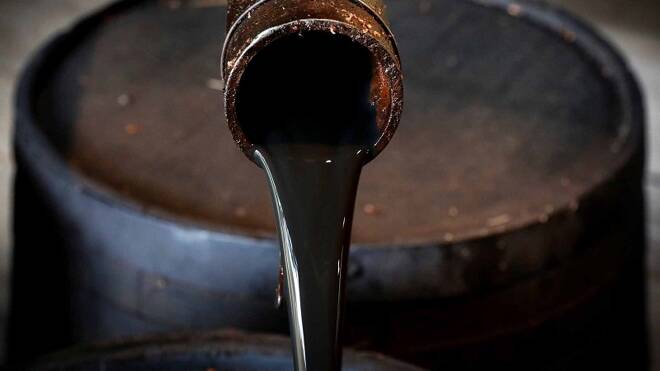Commodity Spotlight: Oil Eases Ahead Of Lunar New Year
By:
Oil benchmarks are moderating at the time of writing, as markets await industry reports by the International Energy Agency (IEA) and OPEC respectively. Note that these reports come as oil markets have had a fabulous February thus far.
Until today, Brent futures posted 8 consecutive days of gains and the active contract is still trading around its highest levels since July 2019, despite today’s drop. The global benchmark for oil prices has soared by nearly 11 percent on a month-to-date basis.
Meanwhile, crude oil is also moderating but remains near its highest levels since January 2020. WTI futures also wrapped up 8 straight days of gains, which was its longest winning streak since February 2019. With crude having advanced by over 11 percent so far this month, the US benchmark for oil prices now has the psychologically-important $60/bbl mark firmly in its sights.
However, note that both oil benchmarks have entered far into overbought territory, with their respective 14-day relative strength indexes having breached the 70 line.
“Such a technical indicator indicates that these prices are ripe for a pullback, even though the momentum (MACD) still points north.”
What investors want to know from the IEA, OPEC reports?
The IEA and OPEC are both set to release their global estimates on supply and demand.
“Markets are eager to know whether these latest monthly reports, both due later today, can justify the optimism that has already been baked into oil prices.”
As the vaccine continues being rolled out across major economies, despite complications in Europe and South Africa, such efforts have prompted investors to believe that economic conditions are firmly on the path towards recovery. As more of the global population is vaccinated, that should bring with it the easing of virus-curbing measures, the ramping up of factory production, as well as potentially more travelling and commutes; the resumption of these economic activities would mean more oil is consumed.
“The soon-to-be-released reports by the IEA and OPEC have to uphold similar hopes for the global demand recovery, or risk unwinding some of the recent gains in oil prices.”
Uncertainties still feature in demand outlook
For the time being, investors are having to digest some mixed signals out of major economies.
China’s air traffic has seen a significant contraction ahead of the Lunar New Year. The week of 18 January, scheduled airline capacity was at 13 million. Two weeks later, that figure fell by 4 million seats, down to 9 million. At a time when billions of trips are typically made crisscrossing China for the festivities, many are staying put due to lingering concerns over the coronavirus. Although some 1.15 billion trips are still expected to take place during the 2021 Lunar New Year holidays, that’s still 60% lower than 2019’s tally, and also 20% lower than 2020’s figures.
Meanwhile, US crude stockpiles posted a much larger-than-expected drop last week, according to data by the US Energy Information Administration. US inventories fell by 6.65 million barrels, compared to market expectations for a decline of 800,000 barrels. However, demand for gasoline in the States last week was still lower by 10% compared to the same period in 2020.
Oil bulls pin hopes on Saudi support, US fiscal stimulus
“At least oil bulls can take heart from Saudi Arabia’s incredible demonstration of its willingness and ability to spur prices higher.”
Earlier this year, it decided to deepen its supply cuts by 1 million barrels per day for February and March.
Such a bold move helped Brent futures to post a year-to-date climb of more than 17 percent while WTI futures have surged by almost 20 percent for the same period. OPEC+ will be meeting again in early March to decide on output levels for April.
Then there are expectations for more incoming US fiscal stimulus as well, which should help the world’s largest economy get back on its feet.
“As long as markets are not dissuaded from expecting more government financial aid for the US economy, that should help oil hold on to much of its gains.”
Disclaimer: The content in this article comprises personal opinions and should not be construed as containing personal and/or other investment advice and/or an offer of and/or solicitation for any transactions in financial instruments and/or a guarantee and/or prediction of future performance. ForexTime (FXTM), its affiliates, agents, directors, officers or employees do not guarantee the accuracy, validity, timeliness or completeness, of any information or data made available and assume no liability as to any loss arising from any investment based on the same.
About the Author
Han Tancontributor
A highly experienced financial journalist and producer with more than seven years of experience gained across some of Southeast Asia’s (SEA) most prominent business broadcasters.
Advertisement
